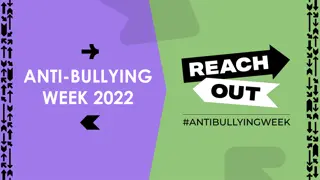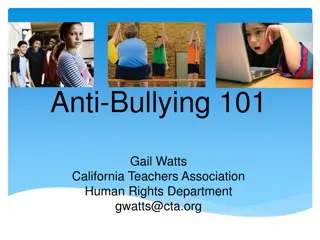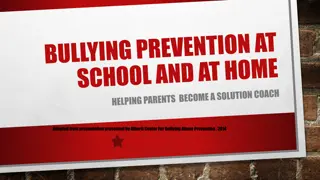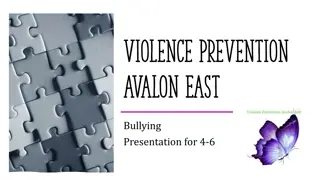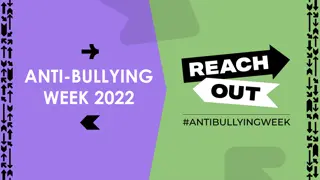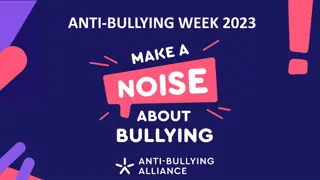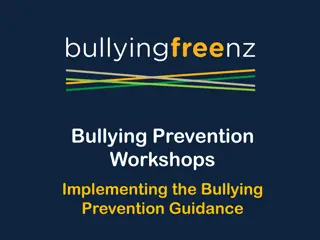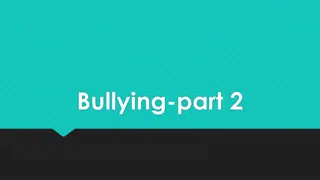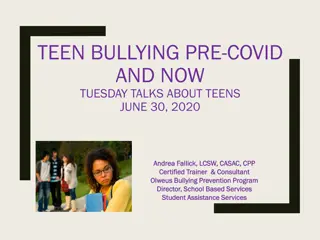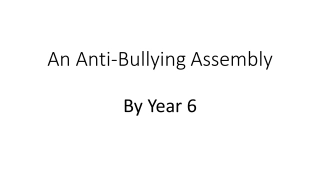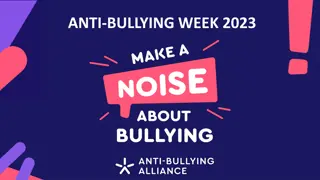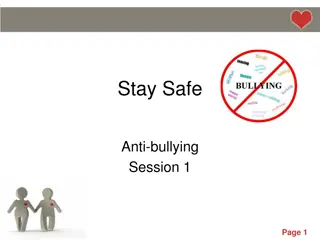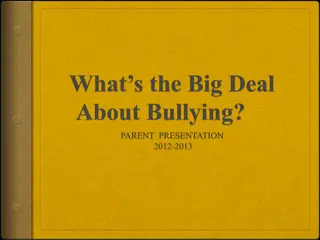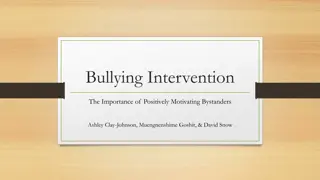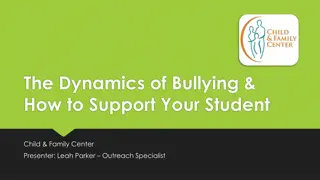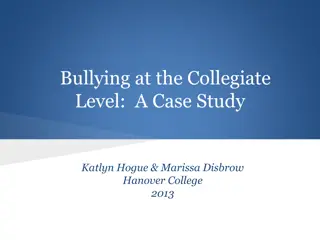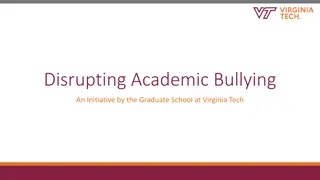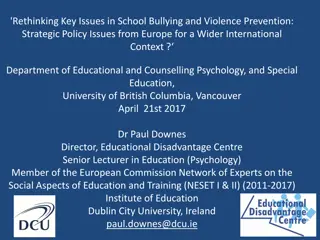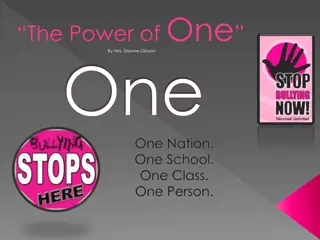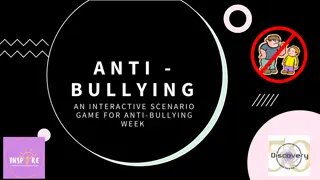Understanding Bullying: Types, Effects, and Prevention
Bullying is unwanted, aggressive behavior involving a power imbalance among school-aged children. It can manifest in various forms such as verbal, social, and physical bullying. Recognizing the signs, understanding the impact, and taking action to prevent and stop bullying is crucial for creating a safe environment for all individuals. Learn about the different types of bullying, when it occurs, and how to address and stop bullying behavior effectively.
Download Presentation

Please find below an Image/Link to download the presentation.
The content on the website is provided AS IS for your information and personal use only. It may not be sold, licensed, or shared on other websites without obtaining consent from the author. Download presentation by click this link. If you encounter any issues during the download, it is possible that the publisher has removed the file from their server.
E N D
Presentation Transcript
Anti Bullying Week Year 9 Assembly
What is Bullying? Bullying is unwanted, aggressive behaviour among school aged children that involves a real or perceived power imbalance. The behaviour is repeated, or has the potential to be repeated, over time. Both kids who are bullied and who bully others may have serious, lasting problems.
In order to be considered bullying, the behaviour must be aggressive and include: An Imbalance of Power: Kids who bully use their power such as Physical strength Access to embarrassing information, Popularity to control or harm others. Power imbalances can change over time and in different situations, even if they involve the same people. Repetition: Bullying behaviours happen more than once or have the potential to happen more than once.
There are three types of bullying Verbal bullying is saying or writing mean things. Social bullying, sometimes referred to as relational bullying, involves hurting someone s reputation or relationships. Physical bullying involves hurting a person s body or possessions.
Verbal bullying Teasing Name-calling Inappropriate sexual comments Taunting Threatening to cause harm
Social bullying Leaving someone out on purpose Telling other children not to be friends with someone Spreading rumours about someone Embarrassing someone in public
Physical Bullying Hitting/kicking/pinching Spitting Tripping/pushing Taking or breaking someone s things Making mean or rude hand gestures
When does it happen Bullying can occur during or after school hours. While most reported bullying happens in the school building, a significant percentage also happens in places like on the playground or the bus. It can also happen travelling to or from school, in the youth s neighbourhood, or on the Internet.
Be the best version of yourself Getting better one day at a time


